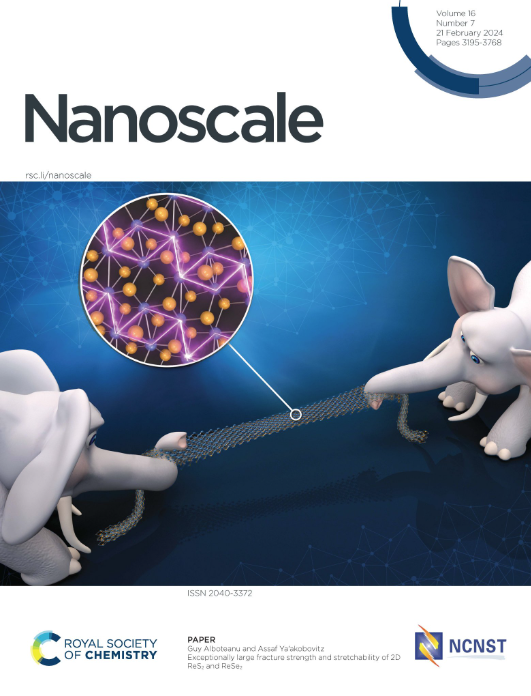Reconfigurable multiwavelength nanophotonic circuit based on low-voltage optically readable engineered resistive switch
IF 5.8
3区 材料科学
Q1 CHEMISTRY, MULTIDISCIPLINARY
引用次数: 0
Abstract
Nanoscale optical functionalities are promising for unconventional computing, including neuromorphic and quantum information processing. Resistive switching devices with optical readability have drawn significant research interest for high-density non-volatile memory and unconventional computing. We propose a multiwavelength nanophotonic circuit consisting of resistive switches based on Ag-SiO2-ITO on silicon rib structure with a capability to electrically remove any wavelength channel(s) at wish. The device features four-layered structure with a SiO2 region positioned between an Ag top electrode and an ITO bottom electrode on p-Si and confines hybrid plasmonic mode within the SiO2 region. The external voltage’s application, conductive filaments forms/rupture in the SiO2 layer, affecting optical absorption through hybrid mode interactions. Experimental results show 27 dB extinction ratio for a 10 μm × 500 nm active device operated at ± 2 volt. Additionally, the circuit achieves multiwavelength functionality using identical sources and 2 × 1 couplers, enhancing reconfigurability. The higher work function of ITO helps reduce energy barrier for ion-migration, overcoming the intrinsic resistance of the SiO2 layer. This engineered nanophotonic circuit, with its high-extinction ratio, excellent retention, lowvoltage operation, and rapid switching speed, is suitable for advanced memory devices, high-speed optical communication, neuromorphic and quantum computation, and programmable photonic circuits.求助全文
约1分钟内获得全文
求助全文
来源期刊

Nanoscale
CHEMISTRY, MULTIDISCIPLINARY-NANOSCIENCE & NANOTECHNOLOGY
CiteScore
12.10
自引率
3.00%
发文量
1628
审稿时长
1.6 months
期刊介绍:
Nanoscale is a high-impact international journal, publishing high-quality research across nanoscience and nanotechnology. Nanoscale publishes a full mix of research articles on experimental and theoretical work, including reviews, communications, and full papers.Highly interdisciplinary, this journal appeals to scientists, researchers and professionals interested in nanoscience and nanotechnology, quantum materials and quantum technology, including the areas of physics, chemistry, biology, medicine, materials, energy/environment, information technology, detection science, healthcare and drug discovery, and electronics.
 求助内容:
求助内容: 应助结果提醒方式:
应助结果提醒方式:


